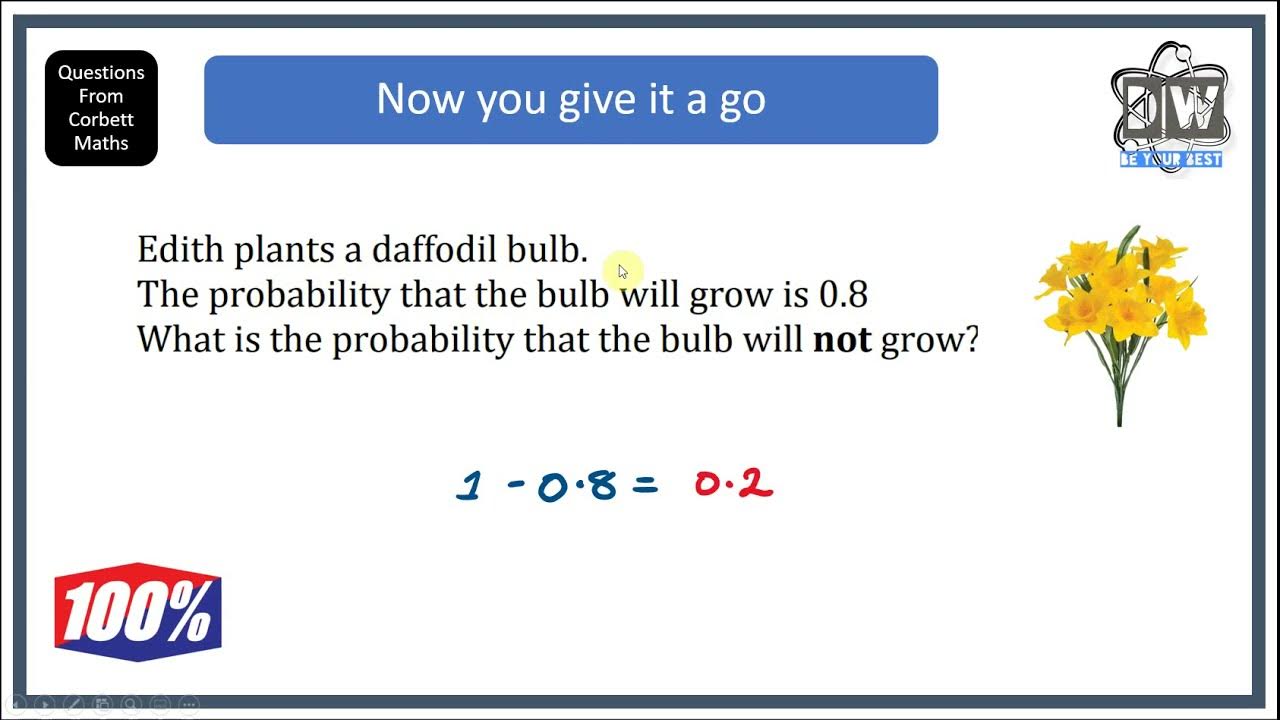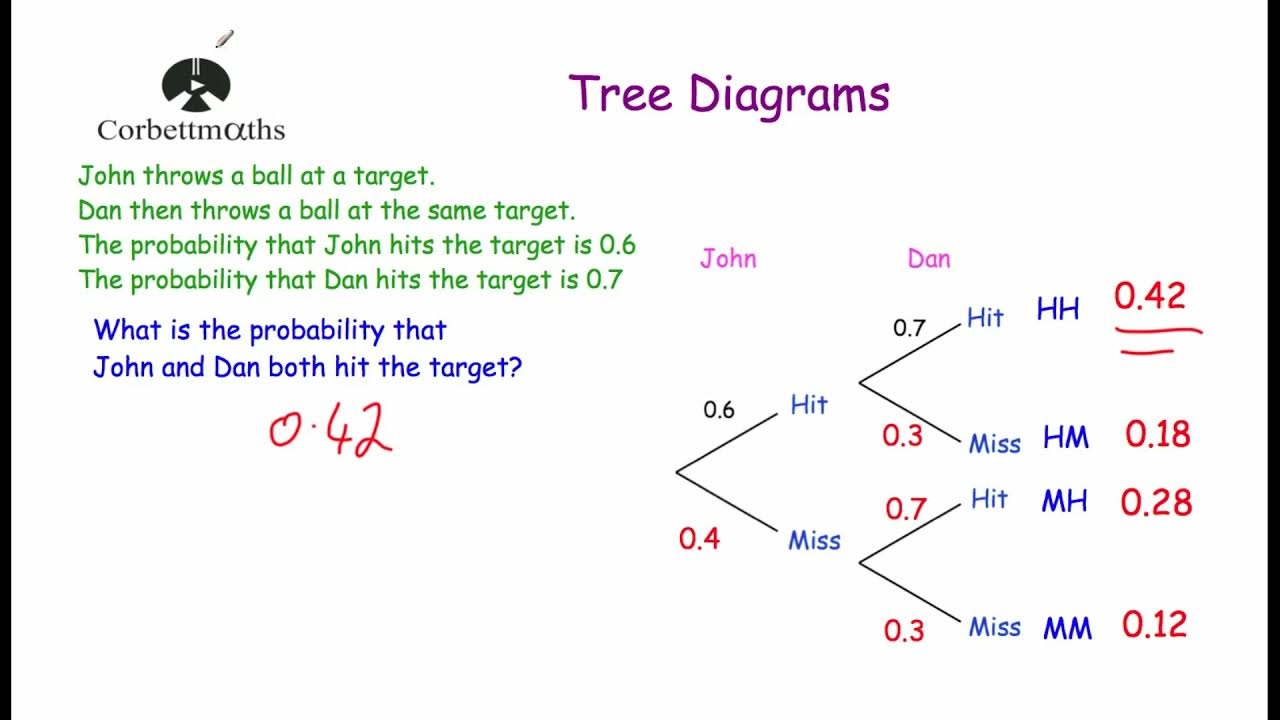PELUANG l DASAR TEORI PELUANG
Summary
TLDRThis educational video introduces the concept of probability, explaining it as the likelihood of an event occurring. It highlights that probabilities range from 0 (impossible) to 1 (certain) and illustrates this with examples involving a coin toss, a dice roll, and a deck of cards. Viewers learn how to calculate probabilities using the formula: favorable outcomes divided by total outcomes. Engaging and informative, the video encourages viewers to grasp the basics of probability while inviting them to like and subscribe for more content.
Takeaways
- 😀 The probability of an event can range from 0 (impossible) to 1 (certain).
- 😀 The probability of a cow flying is 0, as cows cannot fly.
- 😀 When rolling a die, the outcome will always be one of the six numbers (1-6).
- 😀 The probability of rolling a whole number on a die is 100%, as all outcomes are whole numbers.
- 😀 Probability (P) is defined as the number of ways an event can occur divided by the total number of possible outcomes.
- 😀 In a coin toss, the probability of getting heads (1 way) is 1/2 or 50%.
- 😀 The probability of getting tails in a coin toss is also 1/2 or 50%.
- 😀 When rolling a die, the probability of getting a specific number (e.g., 2) is 1/6.
- 😀 The probability of rolling an even number (2, 4, or 6) on a die is 3/6 or 50%.
- 😀 In a standard deck of 52 playing cards, the probability of drawing an Ace (4 Aces in total) is 4/52.
Q & A
What is the probability of a cow being able to fly?
-The probability of a cow being able to fly is zero, as cows cannot fly.
What is the probability of rolling a whole number on a die?
-The probability of rolling a whole number on a die is 1, or 100%, because all possible outcomes (1 to 6) are whole numbers.
How is probability defined mathematically?
-Probability is defined as the number of favorable outcomes divided by the total number of possible outcomes.
In a coin toss, what is the probability of getting heads?
-The probability of getting heads in a coin toss is 1/2, or 50%, since there are two possible outcomes: heads or tails.
What is the probability of rolling a 2 on a six-sided die?
-The probability of rolling a 2 on a six-sided die is 1/6, as there is one favorable outcome (rolling a 2) out of six possible outcomes.
How many even numbers are there on a six-sided die?
-There are three even numbers on a six-sided die: 2, 4, and 6.
What is the probability of rolling an even number on a die?
-The probability of rolling an even number on a die is 3/6, which simplifies to 1/2 or 50%, because there are three even numbers out of six total outcomes.
How many Aces are in a standard deck of 52 playing cards?
-There are four Aces in a standard deck of 52 playing cards.
What is the probability of drawing an Ace from a standard deck of cards?
-The probability of drawing an Ace from a standard deck of 52 cards is 4/52, which simplifies to 1/13.
What does a probability of 0 indicate?
-A probability of 0 indicates that an event is impossible and will not occur.
What does a probability of 1 indicate?
-A probability of 1 indicates that an event is certain to occur.
Outlines

Cette section est réservée aux utilisateurs payants. Améliorez votre compte pour accéder à cette section.
Améliorer maintenantMindmap

Cette section est réservée aux utilisateurs payants. Améliorez votre compte pour accéder à cette section.
Améliorer maintenantKeywords

Cette section est réservée aux utilisateurs payants. Améliorez votre compte pour accéder à cette section.
Améliorer maintenantHighlights

Cette section est réservée aux utilisateurs payants. Améliorez votre compte pour accéder à cette section.
Améliorer maintenantTranscripts

Cette section est réservée aux utilisateurs payants. Améliorez votre compte pour accéder à cette section.
Améliorer maintenantVoir Plus de Vidéos Connexes

Probability Concepts for Data Analysis and Data Science | Statistics for Data Science

PELUANG Part 1 - PENGENALAN DAN MANFAAT PELUANG

Introduction to Probability, Basic Overview - Sample Space, & Tree Diagrams

Probability (Event Not Happening)

Tree Diagrams - Corbettmaths

Probability, Sample Spaces, and the Complement Rule (6.1)
5.0 / 5 (0 votes)
